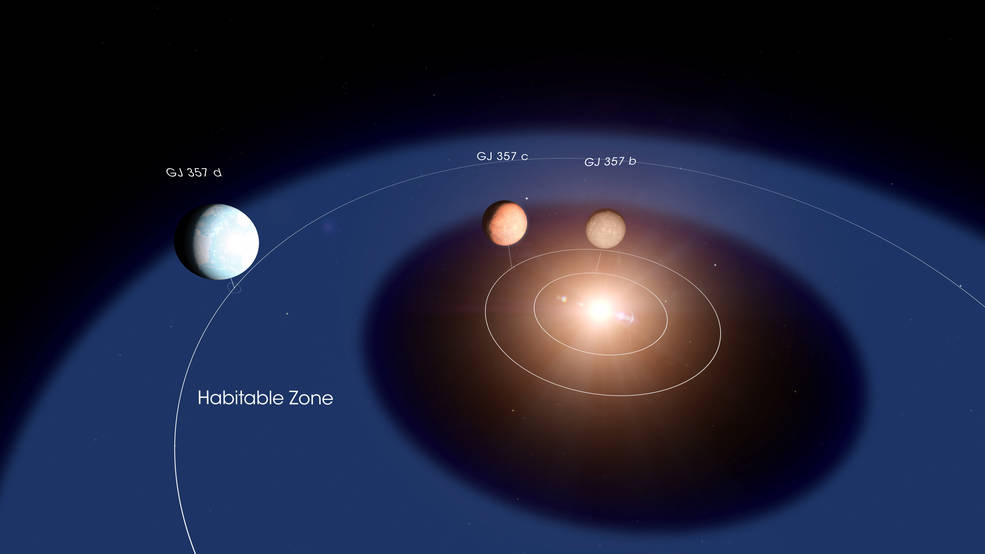With a thick atmosphere, the planet GJ 357 d could maintain liquid water on its surface like Earth and that means it could be habitable. It is nearby a diminutive M-type dwarf sun, about one-third the size of our own sun,(it is unclear if the planet transits) which harbors three planets, with GJ 357 in that system's habitable zone.
In February, NASA's Transiting Exoplanet Survey Satellite (TESS), a mission designed to comb the heavens for exoplanets, observed that the dwarf sun GJ 357 dimmed very slightly every 3.9 days, evidence of a transiting planet moving across the star's face. That planet was GJ 357 b, a so-called "hot Earth" about 22 percent larger than Earth, according to the NASA Goddard Space Flight Center, which guides TESS.

Credits: NASA's Goddard Space Flight Center/Chris Smith
Follow up observations from the ground led to the discovery of two more exoplanetary siblings: GJ 357 c and GJ 357 d. The international team of scientists collected Earth-based telescopic data going back two decades - to reveal the newly found exoplanets' tiny gravitational tugs on its host star, according to NASA.
Exoplanet GJ 357 c sizzles at 260 degrees Fahrenheit, and has at least 3.4 times Earth's mass. However, the system's outermost known sibling planet - GJ 357 d, a super-Earth - could provide conditions just like on Earth and orbits the dwarf star every 55.7 days at a distance about 20 percent of Earth's distance from the Sun.






Comments